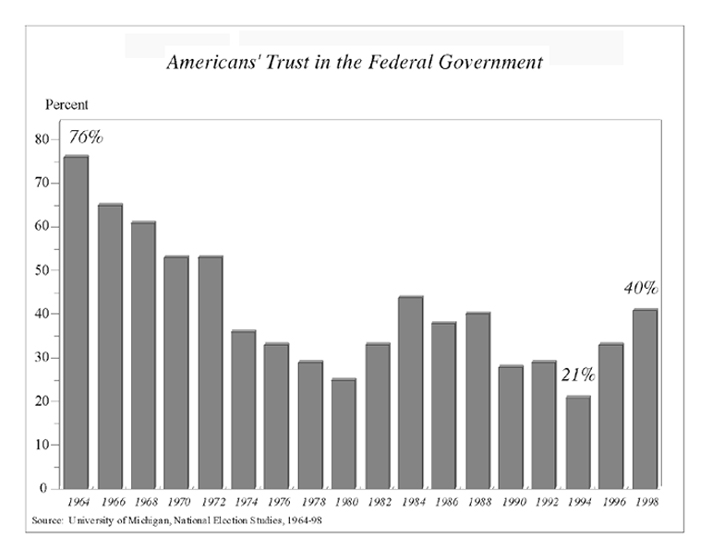Archive
Home
Restoring Trust in Government
"When I became President, I knew we had to change old policies and old ways of doing things . . . the American people had a very low level of confidence in the Government . . . We wanted to change all that. We knew it was important for our economy . . . We knew it was important for the integrity of our democracy." --President Clinton, January 1999

Americans believe that Government can deliver better results and improve their quality of life and the lives of their families. A generation ago, when the University of Michiganís Institute for Social Research asked "Do you trust the Federal Government to do the right things most of the time?" 76 percent of Americans expressed confidence in the Federal Government. By 1994, that number had declined to only 21 percent. Analyses of the underlying causes of distrust of Government by The Pew Charitable Trusts, the Council for Excellence in Government, leading universities and other groups suggest there is a key link between confidence in Government and Governmentís performance.
President Clinton and Vice President Gore recognized this and set about improving the responsiveness and performance of the Federal Government. The success of these efforts is reflected in the significant changes in the way Government does its business and the new confidence on the part of the American public. In the second term of this Administration, public trust in the Federal Government nearly doubled in the course of only four years, reaching 40 percent when last measured by the University of Michigan in 1998.
Recent studies show that many people base their decisions about how much they trust their Government on their assessment of how well they believe Federal agencies perform. When Governments work for the people when citizens receive good basic services and have faith in the Government that is providing them a large measure of stability and community naturally follows. In the past seven years, President Clinton and Vice President Gore have made substantial efforts to improve Government performance with demonstrable results.
Any organization that seeks to perform at a high level must have clear expectations, along with the necessary resources, the flexibility, and the management capacity to improve performance and get results. In 1993, Congress passed the Government Performance and Results Act (GPRA), which established a framework to set expectations, measure the progress toward meeting these goals, and report on results. For the first time this year, agencies will report upon these results in light of the performance goals they established in their 1999 plans. Later in 2000, agencies will update their strategic plans to cover activities for the next three to five years. Each year, agencies are more and more making performance measures a key part of their basic decisions, resulting in better budgeting and better programs.
Excerpt from page 161 of the Fiscal Year 2001 Budget prepared by the Office of Management and Budget.